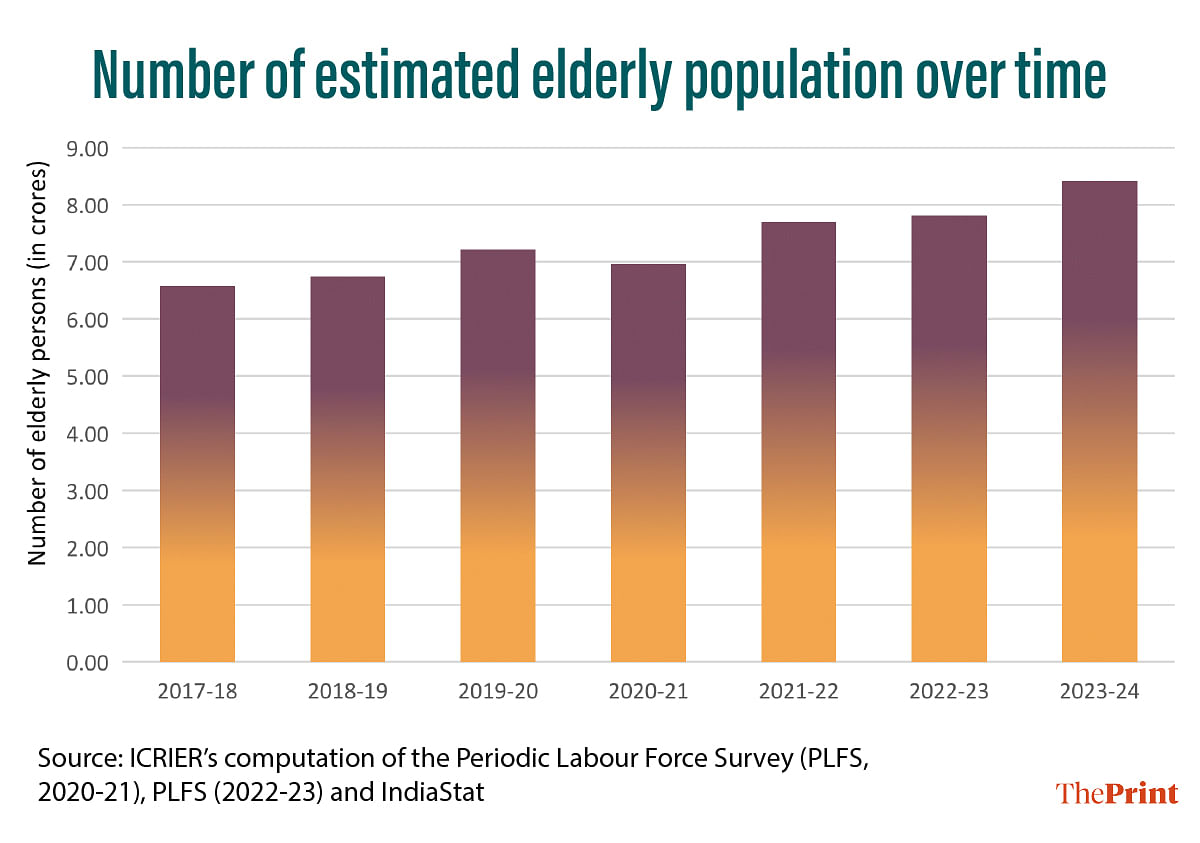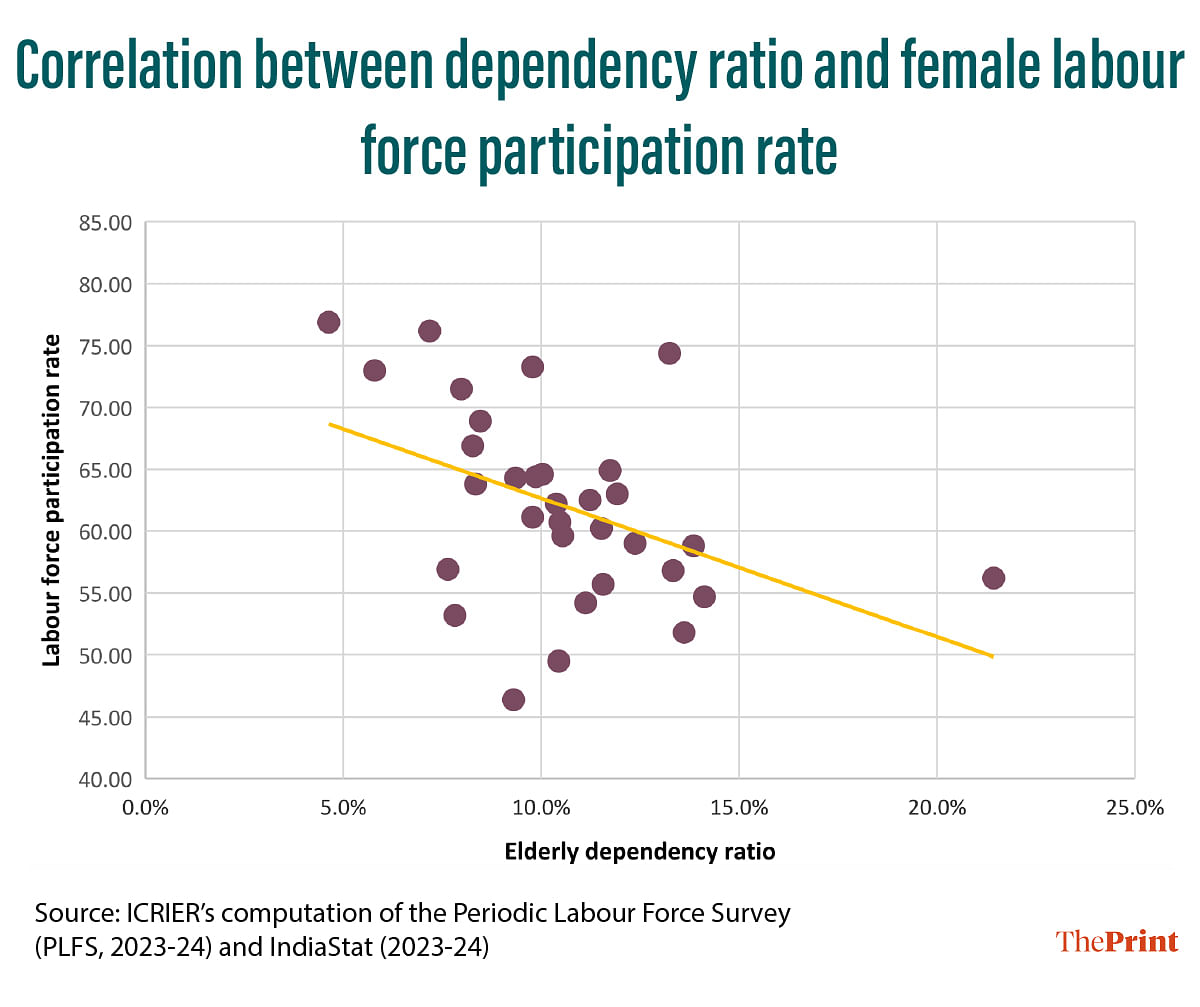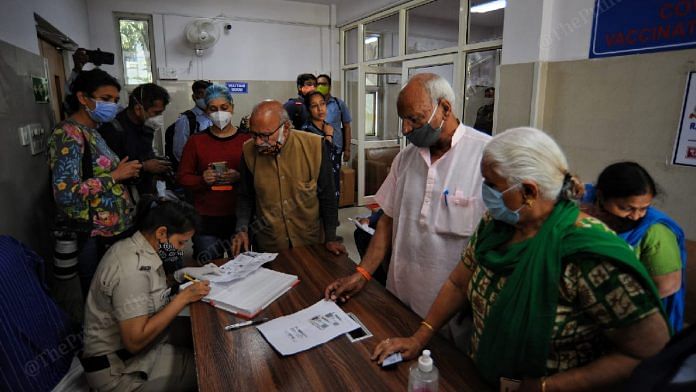India’s demographic landscape is changing. The elderly population of India is expected to double by 2050, according to the United Nations Population Fund. But is India equipped to take good care of the elderly population? Projections say that by 2050, the elderly population will constitute one-fifth of India’s population. Clearly, India requires a composite elderly care infrastructure.
Senior citizens constitute 16 per cent of the voter base in India and yet they are one of the most neglected groups in the country. Over the past few years, the estimated geriatric population has only increased (see Figure 1). With the increased life expectancy and dropping fertility rates, the ageing population of India will need special care and a wide range of other professional services.
Figure 1:

In joint families and non-nuclear households, the lack of this infrastructure has resulted in increased unpaid domestic labour. It is a widely known fact that unpaid domestic care work (which includes childcare and elderly care) remains a hindrance to female employment and education. While childcare is given its due recognition, the infrastructure and support for elderly care is critically lacking.
According to the Periodic Labour Force Survey (PLFS), in 2023-24, 65 per cent of women in the working age group (15-59 years) cite domestic care as the reason for being out of the workforce. But is this only because of childcare? On disentangling this care work into child and elderly care, we find that in states where the child dependency ratio (defined as the number of individuals below the age of 15, as a proportion of the number of individuals in the age group 15-59) is high, the female labour force participation rate is also high. This makes it clear that more than childcare, it is elderly care that weighs down women’s work.
On comparing the association between the elderly dependency ratio and labour force participation rate, we find a strong negative association between the two (see Figure 2). Elderly dependency affects the workforce universally, with a greater impact on women than men. At the state level, Kerala has one of the highest dependency ratios, while Sikkim and Meghalaya have the lowest dependency ratios. Thus, as the average age of the population increases coupled with poor elderly infrastructure, the workforce starts to decline.
Figure 2:

Also read: Old age doesn’t start before 80. Govts must help the elderly contribute to the economy
Learn from Kerala
We are running out of time to build a comprehensive geriatric care infrastructure for better health and a comfortable life for the elderly. Providing elderly care services can also be employment-generating, thereby improving the labour force participation of India. It is the responsibility of both, the government and the private sector, to come together and provide a robust ecosystem for the geriatric population of India. With the rising elderly population and falling fertility, if proper infrastructure isn’t provided then there will be a lack of caregivers. This will lead to family members having to take care of them, either with the double burden of jobs and domestic caregiving, or worse—quitting their jobs.
The palliative care societies in Kerala are an excellent example for the country to learn from. Started in 2008, this palliative care policy focuses on the local ecosystem for caregiving. There are over 1,700 centres, spread over 14 districts, that provide both in-house and home-care services. Mostly they provide doctors, medical practitioners, nurses, and caregivers at home. Other examples include Elders Self Help Groups (SHGs) in Tamil Nadu, Pondicherry, Bihar, and West Bengal.
The first step to building the care infrastructure is to recognise the need for it. For instance, the government should consider improving the access and affordability of health care services by reducing the Goods and Services Tax (GST) of 18 per cent on senior citizens’ health insurance plans. Furthermore, there should be a reduction in the cost of assistive devices, such as walkers, respiratory rehab products, hearing aids, and mobility solutions that are mostly used by the elderly.
While the Senior Able Citizens for Re-Employment in Dignity (SACRED) portal that connects senior citizens with job providers in the private sector and the Seniorcare Ageing Growth Engine (SAGE) initiative to promote senior care services are progressive steps taken by the government, the “silver economy” presents significant opportunities for businesses and organisations that cater to the needs and wants of the elderly population. The infrastructure should be composite, comprising healthcare, non-medical care, housing (for the needy) and basic income/livelihood. Formation and implementation of policies related to elderly care leaves is an important step to take the load off the working population.
Anjhana Ramesh is a Research Assistant at The Indian Council for Research on International Economic Relations (ICRIER). Cledwyn Fernandez is a Fellow at The Indian Council for Research on International Economic Relations (ICRIER). Views are personal.
(Edited by Ratan Priya)






